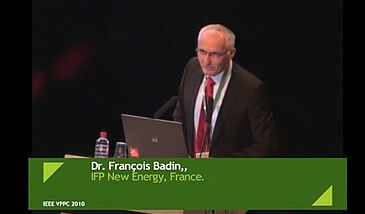En ligne depuis le 06/09/2010
0/5 (0)

Description
Electrifying the propulsion systems of vehicles provides a number of functions that can help reduce energy consumption. This is achieved by optimizing the operating conditions of the internal combustion engine and by recovering a variable fraction of the available energy during braking, in hybrids that we will never be connected to the grid. The simplest systems, which make it possible to eliminate idling, yield fuel savings of 5 to 7% in the standardized European cycle. The most complex systems, which provide more functions, lead to savings of up to 40% in urban conditions. Electrification also allows the creation of additional functions, of benefit to the users of the vehicle or to the community, such as all-electric range and connection to the grid for plug-in hybrids. The implementation of these functions will require the addition of electric machine(s) that will be coupled to the engine in various architectures - series, parallel, series-parallel, through the road... We will briefly describe in the presentation these architectures, their specificities, together with their potential and drawbacks for the case of light duty vehicles applications.
État
- Valorisé
Langues
- Anglais
Licence Creative Commons
- Partage des conditions à l'identique
- Pas d'utilisation commerciale
- Pas de modification
Types
- Grain audiovisuel

